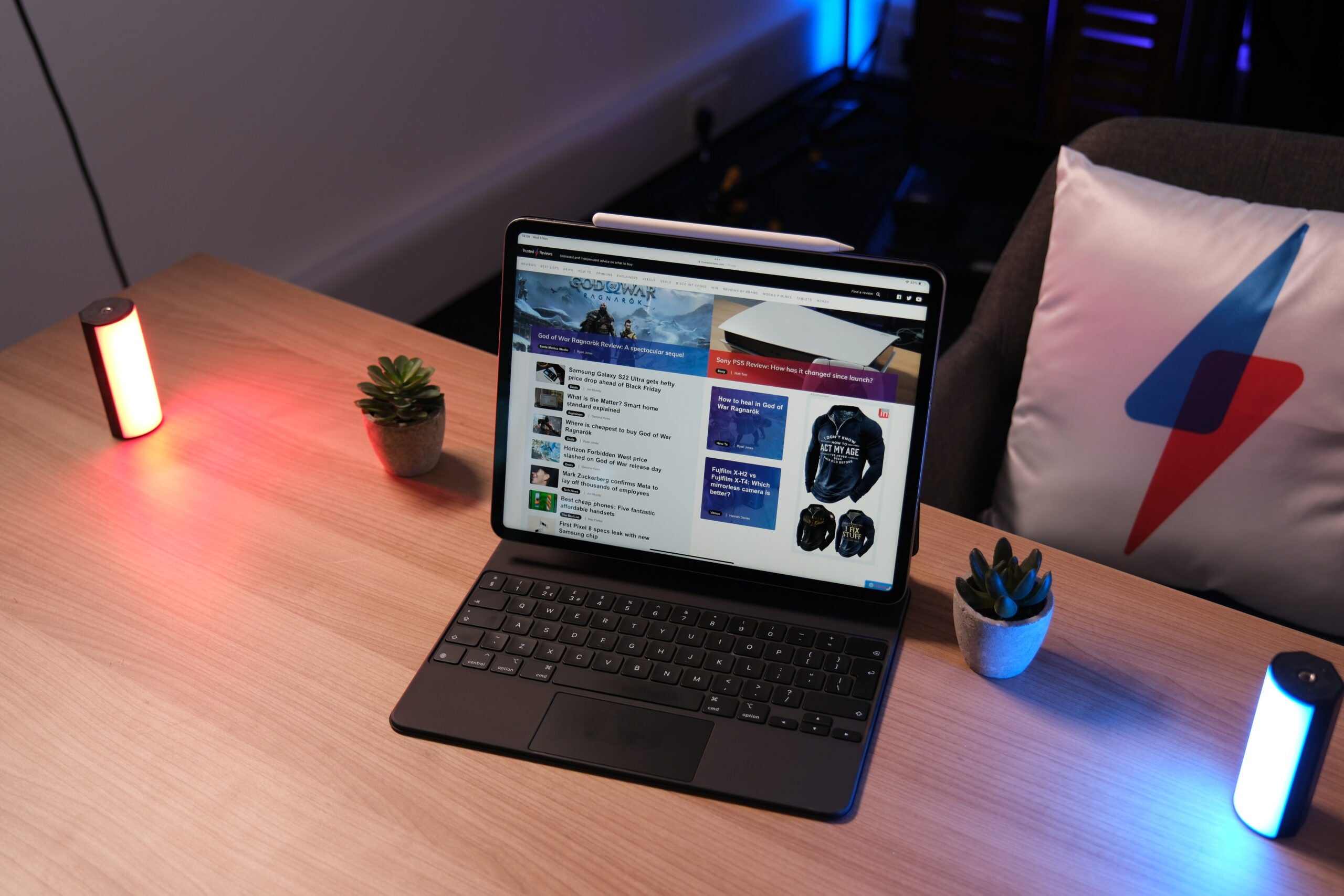Verdict
It’s very similar to the previous model, but Apple’s iPad Pro M2 remains the best high-end tablet ever made.
Pros
- Stunning display on the 12.9-inch version
- Fantastic design and finish
- Lots of tablet apps
- So much power
Cons
- Only the 12.9-inch model gets the best screen
- Very few upgrades over previous model
- M2 chip feels a little wasted
Availability
- UKRRP: £899
- USARRP: $799
- EuropeRRP: €1049
- CanadaRRP: CA$1099
- AustraliaRRP: AU$1399
Introduction
The iPad Pro M2 is the very definition of a “spec bump” release, with the only big change here being the switch to the slightly faster M2 chipset.
If you were hoping for a radical rethink of the iPad Pro 2022, then think again. Rumours of wireless charging similar to the MagSafe-capable iPhone 14 and a new screen panel for the 11-inch were wide of the mark, with the same chipset first seen in the redesigned MacBook Air being the only big upgrade.
Design
- Unchanged from previous version
- Two subdued colour options
- Two display sizes: 11-inch and 12.9-inch
There’s one visual change that differentiates the iPad Pro M2 from the iPad Pro M1 it’s replacing: it now says “iPad Pro” on the back, rather than just “iPad”.
That’s it – everything else is the same.
There are the same duo of fairly dull colours to choose from (silver and a darker silver), the same 11-inch and 12.9-inch display sizes and the same flat design. The weight and dimensions haven’t changed either. This means older cases still work, which is one of the notable benefits of keeping the same size.
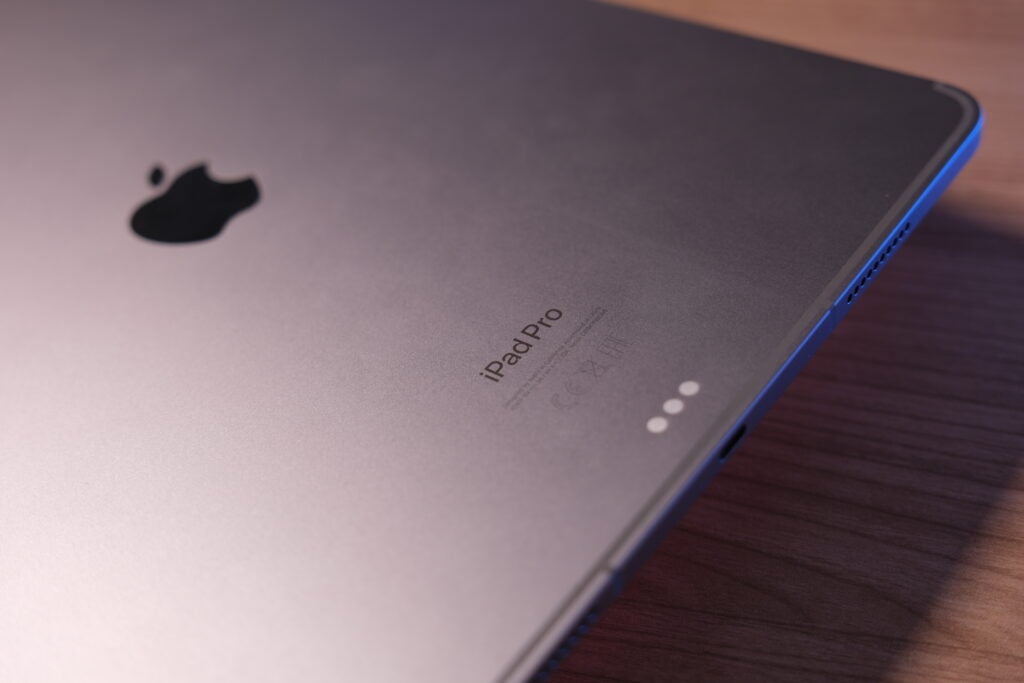
Apple has stuck rigidly with this design for four years now, and while it still looks good – arguably as good as any Android rival – some improvements could have been made to refine the formula: bolder, brighter and more attractive colours for instance, or shifting the front camera from the short portrait side to the long vertical one.
This was a change Apple made with the cheaper iPad 10th Gen, and it means the camera actually looks directly at your face, rather than the side of it – just like a laptop. It makes a big difference when you’re on video calls, and I’m a little disappointed it’s not here.
You can get the iPad Pro M2 in two sizes. The 11-inch model is very similar in overall dimensions to the 10.9-inch iPad 10th Gen and iPad Air, while there’s also a larger 12.9-inch model. I think the biggest reason to plump for the Pro is to get the bigger screen and the benefits of the better display, which I’ll go deeper into in the next section. If you want a smaller tablet, there are cheaper options around.
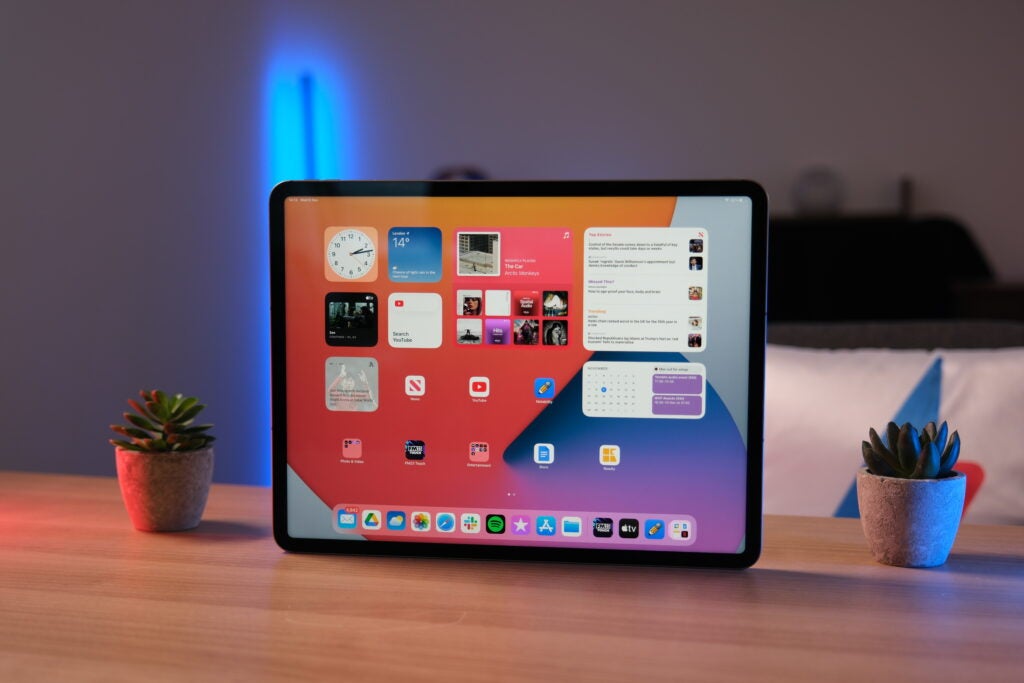
Like all of Apple’s iPads (well, apart from the creaky iPad Air 2022) the new Pro is exceptionally well built. The metal body is light yet feels rigid, which is a little surprising considering just how thin it is.
Screen
- The 12.9-inch version has superior display tech
- Both have good screens, but the 12.9-inch is much better for HDR video
- ProMotion sets it apart from the other iPads
The biggest difference between the 11-inch and 12.9-inch iPad Pro M2 models – aside from the size, of course – is the screen tech used. Go for the 11-inch, and there’s a very good LCD, while the 12.9-inch swaps that out for a stunning Mini LED panel.
As with many parts of this iPad Pro, the screens are the same as on the older models. It’s a shame Apple hasn’t upgraded the smaller 11-inch model to pack the same higher-end display as the 12.9-inch. Early rumours had suggested this was bound to happen – and that’s why you always take leaks with a pinch of salt.
I’ve been using the 12.9-inch model for this review, and while there have been no upgrades, the display remains the best I have ever used on a tablet. Mini LED – to put it very simply – combines some of the best traits of both LCD and OLED.
The 2,500 dimming zones used here allow for deliciously inky blacks, especially noticeable when you’re playing back HDR content. As a test, I loaded up the Dolby Vision version of The Batman, downloaded from iTunes, and wow – this is the best way of showing off this screen. The dark parts of the film are rendered perfectly, to the level I’d expect from OLED. Yet, the 1,600 nits of total available brightness ensures explosions and brighter situations are delivered fantastically well.
You won’t get that 1,600 nits of brightness in general use, though. Scrolling around the home screen, playing games and using apps result in a more modest – but still very bright – 567 nits.
But Mini LED isn’t perfect. The previous 12.9-inch Pro suffered from blooming issues and, as the panel is the same here, this issue remains. Basically, this is an effect that happens when bright text appears on a black screen, leaving a strange bloom of white around the words. It’s certainly noticeable in some instances, although it doesn’t ruin the experience for me.
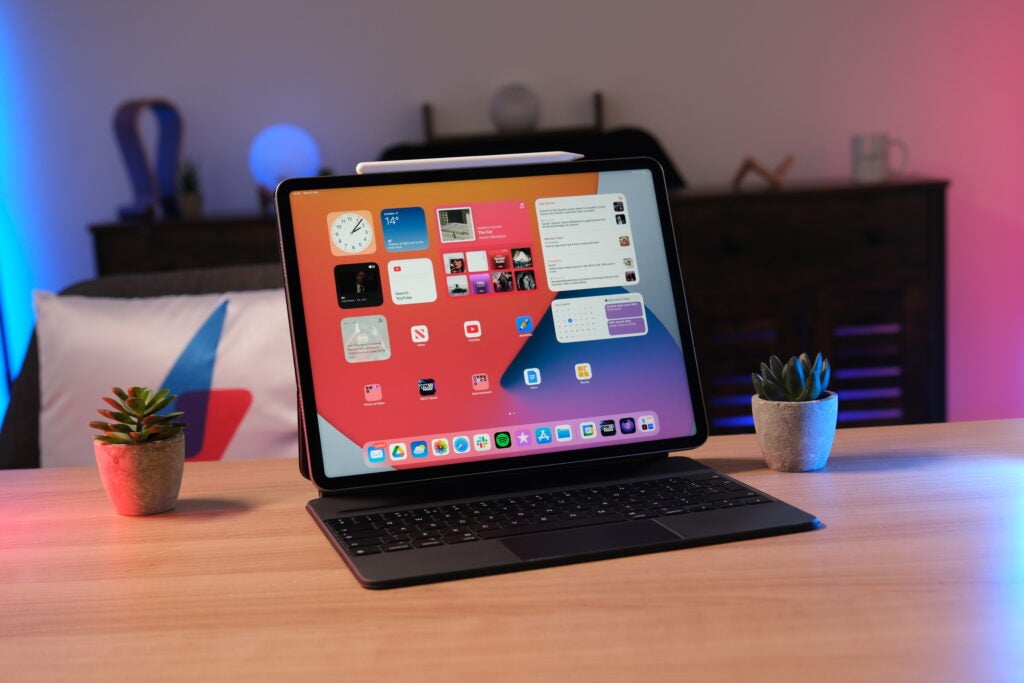
You’ll really see the quality of this screen tech when it’s placed next to the LCD-toting 11-inch model. The blacks on the LCD screen are much greyer, whereas the difference between the brightest and darkest points is less obvious. The Mini LED is just far more immersive. The excellent stereo speakers make the movie-watching experience even better.
Display tech aside, the screens on both of these tablets feature several other benefits over the cheaper iPad models.
For one, they both support the 120Hz ProMotion refresh rate tech that has always been reserved for the Pro tablets and iPhones. This increases the 60 times a second a typical iPad will refresh its display to a maximum of 120 and makes interacting with the screen so much faster and more responsive.
ProMotion also dynamically alters the refresh rate, so it can lower it when you’re watching a video and ramp it up when you’re scrolling or playing a game that supports a high fps – that’s also helpful.
Performance
- The M2 processor is the big upgrade here
- No tablet can match it for performance
- Software can’t match the potential
The only notable upgrade the iPad Pro M2 has over the previous version is the new chipset. Instead of the M1, there’s now a faster M2 piece of Apple Silicon inside. This is the chipset that powers versions of the MacBook Air and MacBook Pro released in early 2022, alongside the early 2023 Mac Mini.
It’s a supremely capable chip and I was very impressed with it when I reviewed the MacBook Air. Yet, for the most part, it feels a little wasted here. When compared with the iPad Pro’s M1, it does up the scores in benchmarking apps by about 20% – in line with Apple’s claims. But the fact is that there was no available app or game that could trouble the M1, and that remains true here.
Nothing I tried feels a lot better than it did on the iPad Pro M1, as there’s still a lack of truly desktop-class apps that can actually push the internals of this tablet. An export of a 4K video I edited in LumaFusion finished up a couple of seconds quicker, and a few big games loaded up marginally snappier on the iPad Pro M2, but it’s hard to really notice unless you have both machines next to each other.
A lot of apps I’ve tried don’t seem to offer any benefits at all. Football Manager 2023 Touch edition would be the perfect title to use for some of the extra power, but it’s clear the developers haven’t unlocked anything here. It’s a shame, because I often felt that I wasn’t getting a true M2 experience and that issue is only compounded by it being the sole real upgrade.
The M2 chip does seem to make the new Stage Manager feature, introduced in iPadOS 16.1 and upgraded with iOS 17, a little more stable. Stage Manager gives you the option of creating a more desktop-style view, with apps that can be resized and moved around.
The software remains one of the iPad Pro’s greatest strengths, but also one of its greatest weaknesses. With all the power at play inside, it feels like there should have been tweaks to turn this into a tablet that’s closer to a MacBook Pro than the more affordable iPads.
The addition of the M2 chip brings with it a couple of other extras. For one, this is the first iPad to support the faster Wi-Fi 6E standard, which will be a welcome spec for those who have recently bagged a compatible router. There’s also a new Apple Pencil feature called Hover, where you’ll get a small indicator on the screen showing the Pencil tip’s location. This can be handy for more intricate drawings, but it does feel very minor – and, of course, you need to purchase an Apple Pencil separately.
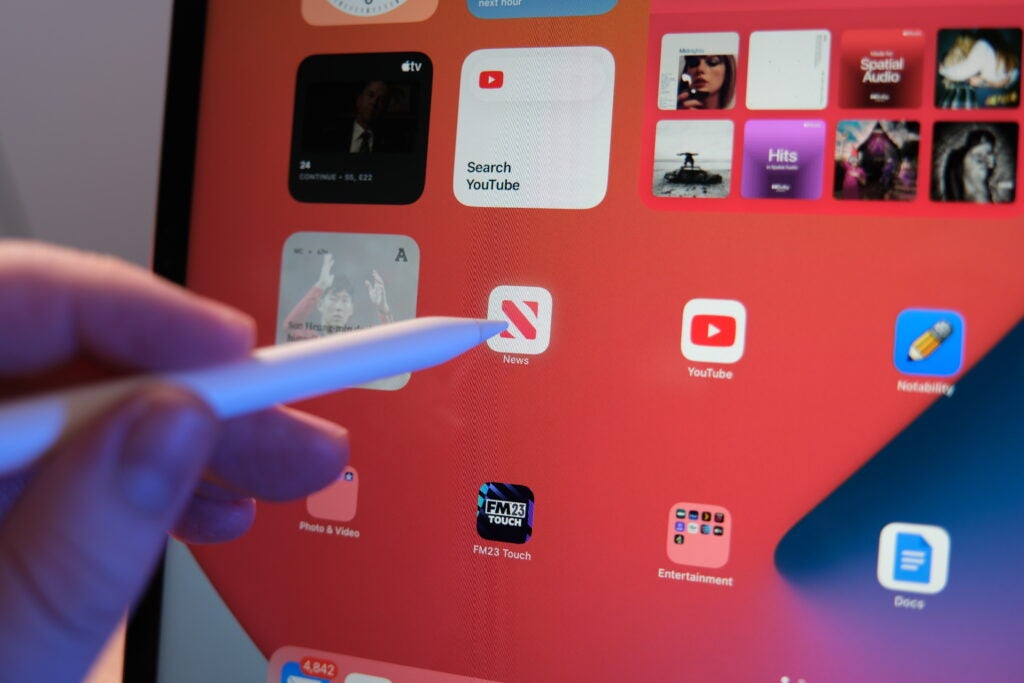
The 2TB max storage option remains, and the 128GB starting storage continues to feel meagre for the high starting price. I would suggest at least the 256GB model, which increases the price of the package further. 5G cellular connectivity is another optional extra.
Two cameras sit on the back of the iPad Pro, with another at the front. The 12-megapixel front camera is high-quality and – dodgy positioning aside – fantastic for video chats. The two rear snappers are also good, although the large size of this tablet means they are best used for scanning documents rather than taking holiday snaps.
Battery Life
- Unlike the iPhone, the iPad charges via USB-C
- Braided cable and charging block included
- Around 10hrs of use
There are no notable upgrades to the endurance of the iPad Pro M2, which lasts virtually the same amount of time in every task I tried when compared with the previous model. It’s been a while since Apple really advanced the endurance of any of its iPads and, Mini aside, I tend to find they all last about the same timewise.
Last year, when I reviewed the 12.9-inch iPad Pro with the M1 chip, I tested it with Spider-Man: Far from Home playing in Dolby Vision HDR. Maxing out the screen brightness, I lost 5% battery in 14mins. Running the same test again with the 12.9-inch M2 model, I lost 5% in 13mins. As I said in the previous review, if you’re really pushing the Mini LED screen, you’ll want a cable handy.
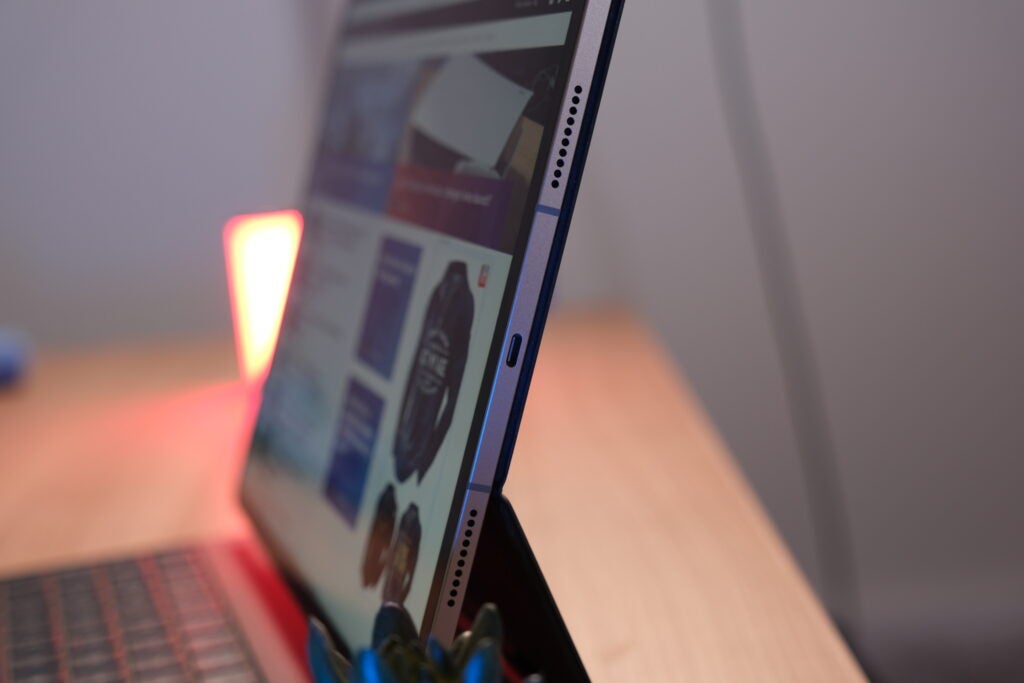
A lower-quality video in SDR with the brightness set to a comfortable level only took off 3% within the same time frame, so you can really tweak your usage depending on how far you want to push it.
Another test I have repeated with this new model is using it instead of a laptop for a full day of work, connecting it with the (separately sold) Magic Keyboard. Again, the results here are virtually identical to the previous few 12.9-inch iPad Pros. Come 18:00, I had 57% left – a good amount more than I would expect from a laptop.
I haven’t tested the battery life on the smaller 11-inch M2 yet, so all these results are from the 12.9-inch model.
Apple still includes an 18W charger in the box, and there’s now a nice braided USB-C to USB-C cable in there as well. Charging isn’t the fastest around, taking 160mins to go from zero to 100%.
Latest Deals
Should you buy it?
You want the best screen: The 12.9-inch version of the iPad Pro M2 has the best display I have used on a tablet. It’s a shame that the 11-inch one doesn’t quite match it.
You just want a tablet: The iPad Pro M2 is expensive, and the cheaper iPads offer a lot of what it does – for less. Unless the swathes of power, the larger screen and up to 2TB appeal, you might be better off with a different model.
Final Thoughts
The iPad Pro M2 is a wonderful tablet that simply can’t be matched for features and specs by anything else on the market – although it’s a little bit of a disappointment as an upgrade on the previous version.
There’s no reason for anyone who splurged on the M1 model to upgrade, so the M2 version is more for those who’ve been hanging onto an older iPad for an extended period and think it’s time for a change.
Considering the high price of both sizes, I think this tablet is for a very specific person. The 12.9-inch is for someone who appreciates top-quality display tech and will make use of it with proper HDR content. The ProMotion fast refresh rate also gives it a more fluid screen overall than the cheaper iPad Air.
Yet, for most, I believe that Apple’s more midrange iPads are a much better choice – at least until some of that power here is really put to use.
How we test
We test every tablet we review thoroughly. We use industry standard tests to compare features properly and we use the tablet as our main device over the review period. We’ll always tell you what we find and we never, ever, accept money to review a product.
Find out more about how we test in our ethics policy.
FAQs
Yes, both sizes of the 2022 iPad Pro M2 come with an 18W USB-C charger in the box.
Trusted Reviews Test Data
Jargon buster
LCD
The type of display usually used on cheaper and mid-range devices. Lacks the punch on an OLED panel.
Dolby Atmos
Dolby Atmos is an object-based audio format. It expands on 5.1 and 7.1 soundtracks by adding overhead channels. Sounds are referred to as “audio objects”, of which there can be up to 128 audio channels, and these ‘objects’ can be accurately positioned within a 3D soundscape. This allows soundtracks that support the technology to place sounds above and around the listener with compatible kit.



















